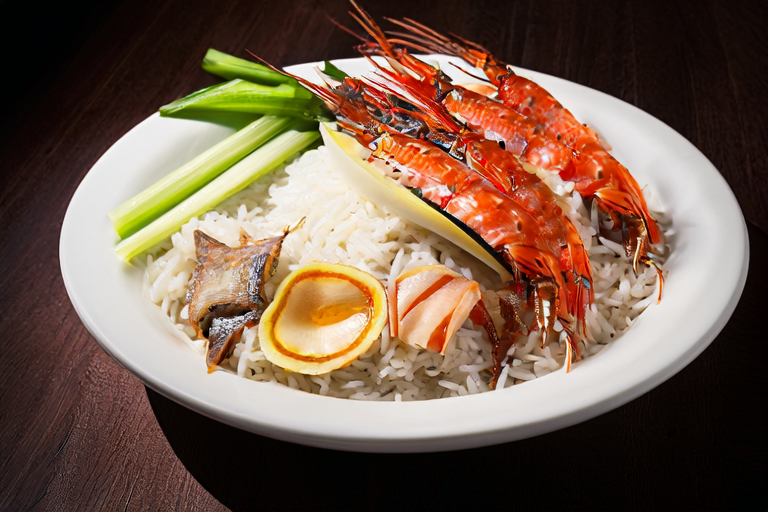- Introduction to Fujian Cuisine
Exploring the Flavors of Fujian: A Delightful Seafood Feast
Fujian cuisine, one of the eight major cuisines in China, is renowned for its unique flavors and rich variety of seafood dishes. The province’s coastal location and diverse geography have greatly influenced its culinary traditions, making it a paradise for seafood lovers. In this article, we will delve into the essence of Fujian cuisine, focusing on some of its most iconic seafood dishes. We’ll explore their preparation methods, ingredients, and cultural significance, providing you with a comprehensive guide to crafting a delightful seafood feast.
- The Role of Seafood in Fujian Cuisine
Seafood plays a central role in Fujian cuisine, with many dishes featuring fresh, sustainable ingredients sourced from the province’s abundant coastal waters. The region’s proximity to the East China Sea ensures that its culinary offerings are brimming with the freshest catches of the day. From delicate fish fillets to succulent shellfish, each dish showcases the intricate balance between simplicity and sophistication that characterizes Fujian cooking.
One of the key elements of Fujian cuisine is its emphasis on preserving the natural flavors of the ingredients. This philosophy is particularly evident in the preparation of seafood dishes, where minimalistic seasoning techniques allow the inherent taste of the seafood to shine through. Another hallmark of Fujian cuisine is the use of umami-rich ingredients such as dried shrimps, mushrooms, and soy sauce, which add depth and complexity to the dishes.
- Signature Fujian Seafood Dishes
Fuliang Fish Balls (福鼎鱼丸)
Fuliang Fish Balls are a beloved delicacy in Fujian, known for their tender texture and subtle flavor. These fish balls are typically made from a mixture of white fish and shrimp, ensuring a delicate balance of textures. To prepare these delectable morsels, finely ground fish and shrimp meat are combined with starch and seasonings. The mixture is then carefully shaped into balls and simmered in a light broth until they float to the surface, indicating doneness. Fuliang Fish Balls are often served in a clear soup, accompanied by slices of ginger and spring onions for added freshness.
Stir-Fried Scallop with Garlic (炒蒜蓉扇贝)
This dish features plump scallops cooked to perfection with garlic and a touch of chili. The scallops are first marinated in a mixture of soy sauce, sesame oil, and rice wine to enhance their natural sweetness. They are then seared over high heat until golden brown, ensuring that the exterior is crispy while the interior remains juicy. Sautéed garlic and chili flakes are added towards the end of the cooking process to infuse the scallops with a fragrant aroma. Garnished with fresh cilantro, this dish offers a harmonious blend of savory, sweet, and spicy flavors.
Steamed Sea Bass with Oyster Sauce (清蒸鲈鱼)
Steamed Sea Bass with Oyster Sauce is a classic Fujian dish that highlights the pristine quality of the fish. The sea bass is cleaned and seasoned with salt and pepper before being placed in a steamer basket. It is then drizzled with oyster sauce and sprinkled with scallions and ginger slices. The fish is steamed for about 10 minutes until just cooked through, preserving its moist and tender flesh. Once removed from the steamer, the dish is finished with a final drizzle of hot oil to bring out the aromas of the herbs and spices. This simple yet elegant dish allows the natural flavors of the sea bass to take center stage.
Mapo Tofu with Seafood (海鲜麻婆豆腐)
Mapo Tofu with Seafood is a fusion of two beloved Chinese dishes: Mapo Tofu and seafood stir-fry. This dish combines the smoky, spicy flavors of traditional Mapo Tofu with the freshness of various seafood ingredients, creating a robust and flavorful dish. The tofu is gently simmered in a rich, spicy sauce made from fermented black beans, chili paste, and ground pork. Shrimp, squid, and scallops are then added to the mix, ensuring that each bite is bursting with seafood goodness. The dish is garnished with chopped green onions and sesame seeds, adding a final layer of fragrance and texture.
- Preparing Your Own Seafood Feast
Now that you’ve learned about some of the signature seafood dishes of Fujian cuisine, it’s time to roll up your sleeves and create your own seafood feast. Start by selecting fresh, high-quality seafood from your local market. Look for sustainably sourced options to ensure that you’re supporting environmentally responsible fishing practices. Once you have your ingredients, follow the recipes provided earlier in this article to prepare each dish. Don’t be afraid to experiment with different combinations of spices and herbs to personalize your meal.
In addition to the main courses, consider preparing some side dishes to complement your seafood feast. Steamed vegetables, such as bok choy or broccoli, can provide a refreshing contrast to the richness of the seafood dishes. You might also want to prepare a light salad with cucumber, tomatoes, and radishes dressed in a tangy vinaigrette. For dessert, indulge in some sweet treats like pineapple tarts or almond cookies to round off the meal on a sweet note.
- Cultural Significance of Fujian Cuisine
Fujian cuisine not only reflects the culinary preferences of the people but also serves as a window into the province’s rich cultural heritage. The region’s long history of trade and migration has influenced its culinary traditions, resulting in a diverse array of dishes that reflect both local and foreign influences. Many Fujian dishes are believed to have originated from the homes of fishermen and traders who traveled extensively along the coast. Over time, these dishes evolved to incorporate new ingredients and techniques, creating the unique flavor profile that defines Fujian cuisine today.
Furthermore, Fujian cuisine holds significant cultural value within the province. It is often associated with family gatherings, festivals, and special occasions. The sharing of meals is an important aspect of Fujian culture, symbolizing unity and harmony. By preparing and enjoying these dishes, you not only savor delicious food but also connect with the rich cultural traditions of Fujian.


